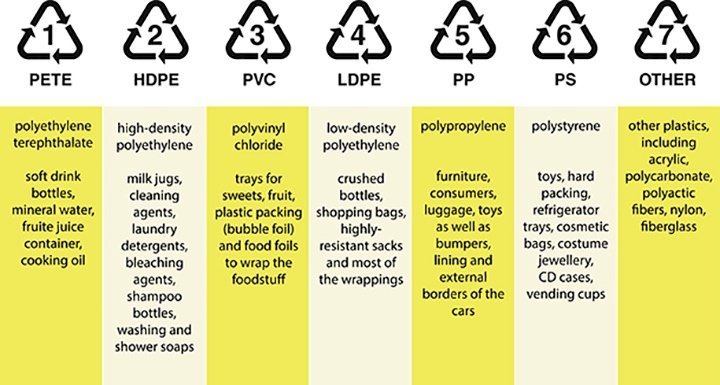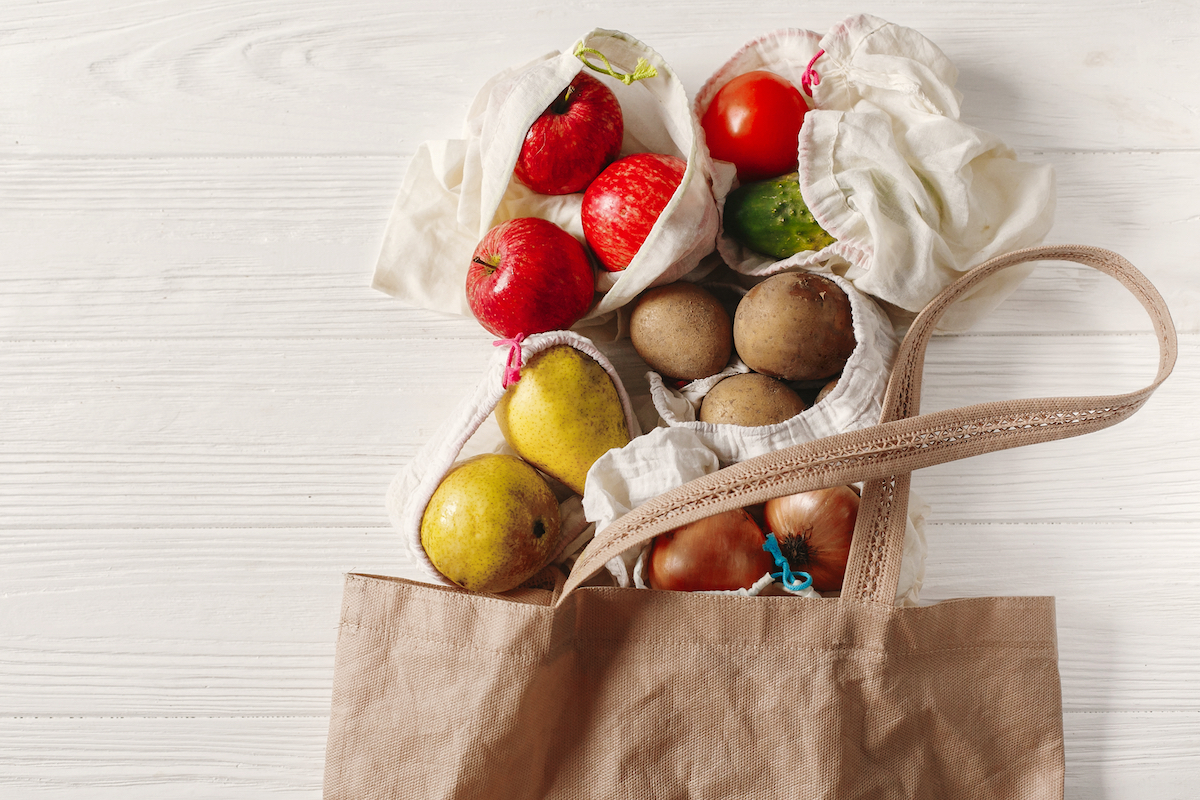Get to a greener lifestyle while reducing waste.
Ideas for change
Maybe you can’t do everything on this list, perhaps you could pick one or two suggestions to work on every season change?
Know the R’s: Reduce, Reuse, Recycle, Refuse, and Rot
1. In the case of rot – compost your banana peels, avocado pits, eggshells, and coffee grounds. Composting can be an exciting and educational family project that will reward you with abundant soil to use in planting. You can also giveaway your compost, believe it or not!
2. Install motion sensor light switches in case your family members just can’t get the hang of flipping off the light switch. We have these in our laundry room. Not only does it save money because the lights go out when there is no movement, but it also saves me trying to flip the switch when I have my hands full of clean laundry!
3. To reduce the amount of plastic you toss, buy a reusable water bottle and carry it everywhere you go.
4. Reduce the amount of water you use by checking for leaks, installing faucet aerators, turn the water off while brushing your teeth, learn to use grey water, catch rainwater for watering plants and gardens if it is legal in your state.
5. Reduce wasted energy in simple ways such as matching your pot to the burner size to reduce lost energy heating. Try to keep your freezer and refrigerator stocked, so it runs more efficiently. Pressure cookers use less energy than crock pots, and hey, they are all the craze lately.
6. Recycle items correctly; this is a great job for kids. Find out what your city recycles and start separating it from your everyday trash. Either take it to the recycling center or have it picked up if that option is available where you live.
7. Know HOW to recycle specific items. When it comes to glass, rinse before tossing it into the recycling bin.
8. For plastics, know your numbers, read Plastics by the Numbers. In this article you can learn all about what those numbers mean, “#7 plastics are not for reuse, unless they have the PLA compostable coding. When possible it is best to avoid #7 plastics, especially for children’s food. Plastics with the recycling labels #1, #2 and #4 on the bottom are safer choices and do not contain BPA. PLA coded plastics should be thrown in the compost and not the recycle bin since PLA compostable plastics are not recyclable.”

9. Use beeswax wrap instead of plastic wrap and sandwich baggies. Make your own with my how-to video tutorial or if you prefer you can buy Beeswax wrap already made. Salad in a jar is also very trendy right now!
10. Buy items in bulk as often as possible, save jars and other containers to carry bulk items home in. Take your container to the store and weigh it for the tare so the cashier can deduct the weight of the container when checking you out.
11. If possible buy other items in bulk to cut down on the packaging
12. When purchasing bulk is not an option, choose products in paper bags or glass instead of plastic wrapped products.
13. Switch to loose leaf tea instead of bags, especially those which are also individually wrapped in plastic.
14. Buy produce without plastic wrap around a foam tray, loose fruits and vegetables in their original protective wrap (the peeling) is best.
15. If you eat meat, consider buying from a local farm or a butcher, they often use butcher paper instead of plastic.
16. Instead of single-use coffee, use a French Press or a Chemex with a reusable filter. A reusable organic cotton coffee filter will last over a year and will replace around 500 paper filters. It’s simple to rinse and hang to dry, plus I love the way mine feels and looks. The Coffee Sock (which is what I use) is made from GOTS certified Organic cotton right here in the USA! You could also cold brew your coffee with the cold brew coffee sock kit.
17. Refuse samples and goodie bags when possible.
18. Refuse plastic straws with drinks.
19. Bring your own refillable coffee mug to the coffee shop!
20. Carry reusable grocery bags with you so you will not have to use paper or plastic at the supermarket.
21. Use matches instead of plastic lighters.
22. Make homemade cleaners in glass bottles and skip plastic if possible.
23. Use essential oils instead of air fresheners, which are also toxic.
24. Take care of the things you currently have, repair if possible, if you look on youtube you will find a video for just about anything you want to fix.
25. Instead of tossing items while they still have usability, donate them. Americans throw away 81 pounds of clothing per year.
26. Clothing that is too worn or stained to be donated can be used as rags instead of paper towels. It is not hard to do, just rip them up and store them till they are needed.
27. Concerning clothes, also consider purchasing clothing second hand.
28. Carry reusable utensils (I carry a bamboo spork) and a reusable container for carryout. My daughter Macey carried reusable chopsticks when we went to China!
29. Consider stainless steel or glass straws instead of plastic straws which almost all end up in the landfill.
30. Buy wooden or bamboo beauty tools such as a brush with a wooden handle. Use tweezers made of metal instead of plastic.
31. Choose beauty products in glass or biodegradable packaging and reduce how many different types of products you consume. Ask yourself, “is this item essential?” A good example is shaving cream in plastic tubes or bottles; coconut oil is excellent for shaving. Not only does it moisturize but it is also anti-fungal, anti-bacterial, and antiviral which helps cut down on problems when shaving. Using coconut oil to shave my underarms is part of how I quit using deodorant.
32. Speaking of shaving, using a stainless steel safety razor beats the disposable plastic razors in many ways! Not only do they create less waste, but they also give a higher quality shaving experience!
33. Think about using the oil-pulling method of cleaning your teeth followed by a brush with baking soda and or charcoal. You can even mix in some peppermint oil if you like that minty fresh taste after brushing.
34. You do not have to buy unpaper towels to stop using paper towels, just purchase inexpensive bar mop towels if you are trying to save money. Keep the bar mop towels in a drawer that is handy and grab them when you would typically reach for a paper towel. I bought some restaurant quality bar mop towels at Costco, but you can also get them on Amazon. Using bar mop with a single color stripe will help remind you that these are your paper towel replacement for mopping up spills, etc.
35. Choose bar soap instead of liquid soap that comes in plastic bottles. Even better, buy bar soap from a local artisan! I buy mine from Bird On A Wire here in Knoxville. I stock up throughout the Farmer’s Market season to last my family through the winter.
36. Choose lotion in glass bottles, locally, I shop at Fresh Kale because they have great products and my favorite lotion (Sunday Morning) comes in glass bottles.
37. Alternatively, you could try using olive oil as a moisturizer https://www.simpleandsustainable.co/sarah-price/why-olive-oil-is-my-go-to-moisturizer
38. When buying gifts, choose experiences if possible. When a material gift is necessary, try to avoid plastic toys and go for ones (wood toys?)
39. Don’t get caught up in the zero-waste movement and toss all your plastic to start over. Use up what you have, recycle or donate. We do not want to contribute to the problem in our attempt to make it better.
40. Try purchasing products made with recycled plastic.
41. Work on changing your mindset to making things last as opposed to seeing everything as replaceable.
42. Don’t get caught up in the comparison game or guilt-tripping! I believe that “Zero-Waste” is virtually impossible; which is why I say “Zero-Waste-Effort” or “Waste Reduction Methods” instead; it is a goal towards which I am always working.
43. Think of it as a journey instead of a destination. Each day you skip one straw, recycle a plastic container, or reuse a cardboard box from that item you purchased on Amazon. Pat yourself on the back for each victory as opposed to a kick in the butt for any areas where aren’t hitting the mark. Every step in the right direction is a win!
44. Also consider reducing waste in other areas such as time management. This may not seem like it has anything to do with waste reduction but if you save time by consolidating errands into one trip you will also save gas, and spend your “saved time” on recycling or another area.
45. Moving? After you move offer up your cardboard boxes on Craigslist or a give away site, don’t throw them out.
46. Reduce food waste by meal planning, using the food you already have in your pantry and fridge, etc. For more food waste reduction tips read EPA’s tips for reducing food waste at home.
When it comes time to purchase an item, give it extra thought. I have found when purchase in a rush I often feel regret later. Take a photo of the item or write down what you’re thinking of buying and think about it for a few days first. You might be able to find a better alternative, or maybe you do not need it after all?
Ask yourself
The following thought provoking questions will help you make better purchases and can even improve your budget over time! This is obviously not a list you will need for every little item but something to consider when making some purchases.
- Do I need this item or can I live without it?
- If it is to replace something that’s broken, can I fix it instead?
- Is this item a duplicate?
- Does this item put my family’s health at risk? (think non-stick cookware, plug-in air fresheners, dryer sheets)
- Is there a way to barter or swap to get this item?
- Can I make it myself?
- Is this something I can grow myself?
- Can I repurpose something else instead?
- Will it be worth my time to clean and maintain this item?
- Who am I supporting when I make this purchase (a small family, a multibillion-dollar company)?
- Is there a way to purchase this from a local small business?
- Can I find a more sustainable option? For instance, is there an option that’s organic, made from recycled or sustainably grown or harvested materials, or fair-trade?
